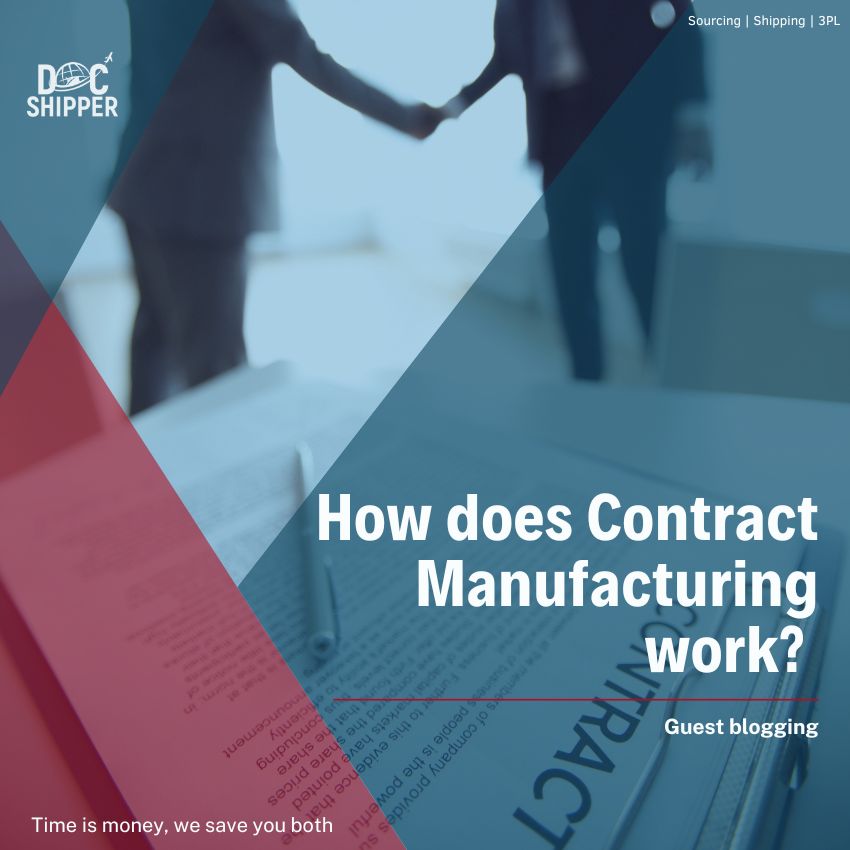Introduction:
As part of contract manufacturing companies in Mexico, the customer provides the contractor with all the technical conditions and the materials necessary for the production process (if necessary). The contract specifies the requirements for product quality, certification, quantity, conditions, and delivery dates, which the contractor must fulfill. The contract also contains instructions for conducting inspections and testing products approved by the customer who hires this contractor.
Because the process is primarily outsourced to a partner in a foreign market who privately trademarks the finished product, many companies and industries are interested in such contracts.
We will discuss the critical details that need to be considered in contract manufacturing. Particular attention will be paid to an aspect rarely covered in numerous articles published on this topic. The aspect of interest to us is related to the management of changes in any production process, the control of testing, and the overall management carried out by both parties in contract manufacturing.
Contract Manufacturing Agreement
To minimize the risks associated with contract manufacturing, it is recommended to conclude a contract manufacturing contract. The terms and conditions of such an agreement depend on the specific country; they consider the norms of local legislation governing the conclusion of standard contract manufacturing agreements. In fact, the legislation will not be the same if you contract manufacturing companies in Mexico or in China.
Based on a contract manufacturing agreement, the contractor is reimbursed for the cost of full-load production, plus profit is paid (determined in each specific case separately). The contract assumes that in the relationship between the parties, the guarantor has all the rights to intellectual property related to the product and the production process.
This standard document includes a distribution of risks between the parties, which corresponds to the distribution of risks in a typical contract manufacturing relationship, as well as an obligation of the client to indemnify the contractor from liability and indemnify him for any loss and damage in connection with the implementation of the production activity.
DocShipper Tip
DocShipper Advice : If you are interested in contract manufacturing, but need support in this process, DocShipper is here to help you find the best supplier for your product by putting our extensive network of manufacturers at your disposal. For more information, contact us!
Content of the contract manufacturing contract
The contract manufacturing agreement should include the following sections:
- purpose and essential information;
- products to be produced and special requirements for the production process;
- budgeting conditions, payment mechanisms, and reconciliation of settlements;
- territory;
- buying the production materials;
- assistance in termination of the contract;
- conclusion of subcontracts and assignment of rights;
- provisions relating to the notification of the parties;
- dispute resolution, jurisdiction, and arbitration;
- other provisions (for example, confidentiality, force majeure circumstances).
Key Elements Of Contract Manufacturing

Selecting a contractor that properly complies with current drug manufacturing and quality control regulations is the right decision to avoid the adverse effects.
Among other things, the following aspects should be considered critical elements related to contract to manufacture:
- quality agreement;
- compliance with the rules of the production process;
- supplier audit;
- release of manufactured products;
- documentation and records;
- cleaning validation ;
- change management.
These fundamental elements must be clearly defined, agreed upon, and controlled to avoid misunderstandings that can lead to substandard products. Below is a more detailed description of these critical elements.
DocShipper Alert
Docshipper Alert : DocShipper is also providing quality control services to ensure the product stock is respecting standards, norms, and specifications. If you have any questions about this service, don’t hesitate to contact us.
Quality agreement

The quality agreement should clearly state who performs each step of the outsourced activity: knowledge management, technology transfer, supply chain, subcontracting, quality assurance and material procurement, material inspection and release, production execution, and quality control (including process control, sampling, and analysis).
Compliance with the rules of the production process
The basic principle is to ensure the quality, efficacy, distinctiveness, and safety of products for the subsequent protection of both the customer and the manufacturer. Thus, adherence to the fundamental principles of the production process is essential to ensure the characteristics mentioned above and for the timely delivery of the finished product by the contractor to his customers. Compliance with the rules of the production process includes the following:
- production time;
- the number of materials produced;
- loading of production capacities;
- overall equipment efficiency;
- production schedule;
- system availability.
Supplier audit
As a subcontractor, the contractor is subject to audit by the customer. It checks if the contractor is producing products following quality standards.
One of the most common ways to conduct an audit is to check the sufficiency and compliance of processes with a checklist given by the customer.
Review past audits and pay attention to possible problem areas identified during the last audit (if any) to take appropriate corrective actions.
During the audit, it is necessary to consult the checklist and have a notebook with you to enter detailed records of the audit results.
For a thorough analysis, at least three product lots should be selected that are characterized by the following parameters:
- Traceability of all components or materials used in such lots.
- Document raw materials or components, technological processes, and inspections of finished products from these batches.
- Storage and distribution records, as such records may be used for possible subsequent product recalls.
DocShipper Info
DocShipper info: In addition to quality control, DocShipper is able to provide you with a supplier audit service to help you know if your supplier is reliable and will respect your specifications. If you are interested in this service, you can ask your questions to our experts.
Output of manufactured products
Batch release of manufactured products is a mandatory requirement to ensure the high quality of products intended for use, sale, supply, or export. Analytical expertise of product batches includes chemical, physical and biological testing.
The customer provides permission to release batches of products for commercial use. The customer’s quality management system should clearly state how the quality of each batch of products will be confirmed by the appropriate authorized person and his responsibility.
Documentation and records

All records relating to outsourced activities, such as production, analysis, and distribution of products, as well as test samples, must be kept by the customer or be available to him at any time. Any records relating to the evaluation of product quality in the event of any claims or possible defects or in connection with the investigation of any case of suspected product counterfeiting must be available and indicated in the relevant procedures of the customer.
Cleaning validation
Cleaning is critical in contract manufacturing activities because they use multi-purpose manufacturing facilities and equipment. Cleaning validation can be particularly challenging for both the customer and implementing partners. In any case, the contractor should demonstrate cleaning performance, and a cleaning validation plan should be discussed and agreed upon. Such a document should mention the following activities:
- assessment of equipment and products;
- assessment of the impact of other production processes on the processes under the contract; if the processes under the contract have already been processed and validated within the grouping, then no further validation is required;
- determination of suitable cleaning agents and methods of cleaning;
- identification of residues (waste), including cleaning agents that need to be tested in terms of solubility, toxicity, etc., and documentation of an acceptable solution;
- definition of acceptance criteria for residues (waste), including cleaning products;
- development of sampling methods, such as plugging and washing, as well as methods for removing residues (waste);
- development of analytical methods for determining the nature of residues (waste) resulting from plugging and washing, for example, methods of visible residues, total carbon concentration in organic compounds, HPLC;
- drawing up and approval of the validation protocol;
- conducting validation studies according to the protocol;
- drawing up and approving a validation protocol containing a description of studies, conclusions, and recommendations.
Change management process

When choosing a contractor, the client company focuses on various essential points identified in the previous sections. The contract between the client company and the contractor may be valid for several months or years. Risks that are little talked about in articles on contract manufacturing are those associated with making changes.
It makes sense to divide such changes into small and large ones and create a strategy for appropriately implementing such changes. For example, small changes can be implemented by giving the client appropriate notification, but significant changes must be pre-approved by the customer before they are implemented in practice.
DocShipper Advice
DocShipper has written for you another article to Help You Manage Supply Chain Risk effectively and choose the right strategy. If you have any questions about contract manufacturing, don’t hesitate to contact our experts.
FAQ | How does Contract Manufacturing work?
Contract manufacturing is when a contract manufacturer contracts with a company to produce certain components or products over a specified timeframe.
In fact, contract manufacturing is an outsourcing form, but the term of outsourcing is more general because it relates to acquiring any goods or services from third parties while contract manufacturing refers to engaging a partner to produce your goods.
The main advantages of contract manufacturing are :
- Minimize the cost of production by taking advantage of economies of scale
- Save time and focus on selling activities
- Have high quality products by rely on skilled manufacturer
- Save money on the production process
- Entering different markets using contract manufacturing
The main disadvantages are :
- Taking the risk that the manufacturer will not produce meeting the required standards
- Lose control on the production process
- Sometimes manufacturers will not be able to respect the deadlines and the order will be delayed
- The difference of language and culture between the customer and the manufacturer
Read More
You might be interested in these articles
DocShipper info: Do you like our article today? For your business interest, you may like the following useful articles :
Need Help with Logistics or Sourcing ?
First, we secure the right products from the right suppliers at the right price by managing the sourcing process from start to finish. Then, we simplify your shipping experience - from pickup to final delivery - ensuring any product, anywhere, is delivered at highly competitive prices.


Fill the Form
Prefer email? Send us your inquiry, and we’ll get back to you as soon as possible.
Contact us





